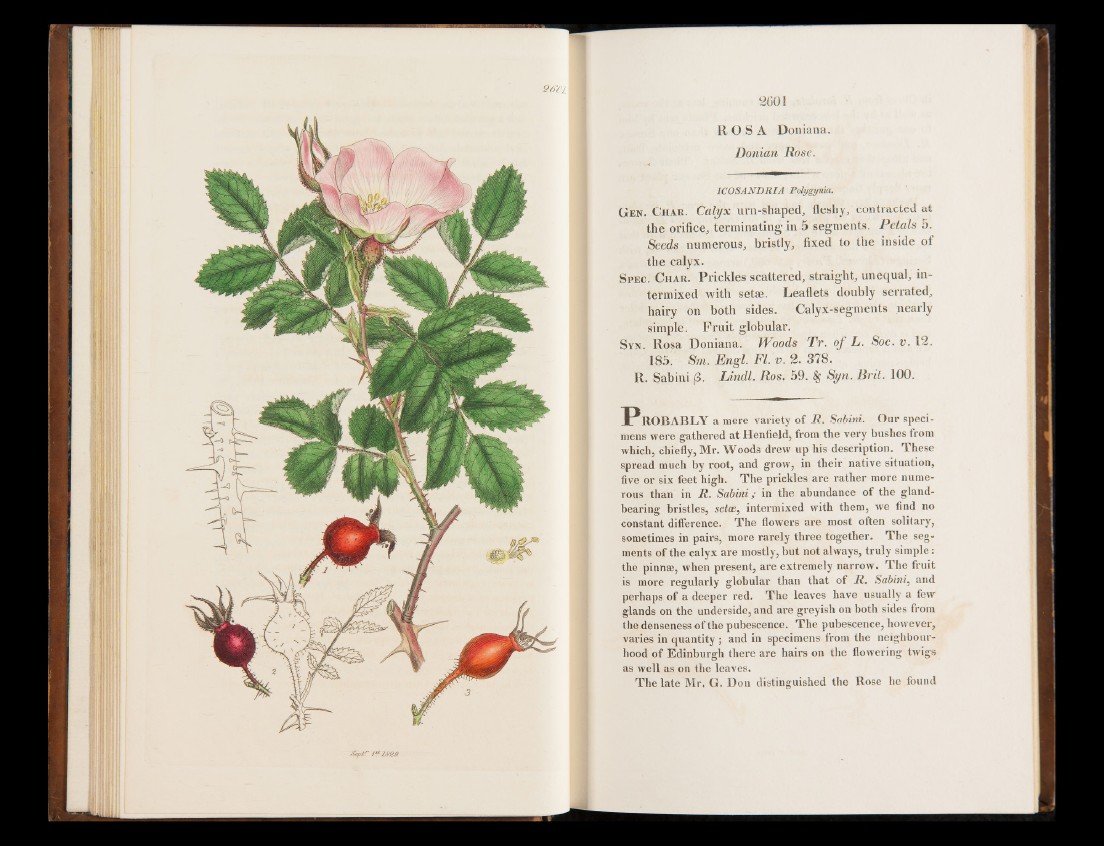
R OS A Don iana.
Donian Rose.
ICOSANDRIA Polygynia.
Gen. Char. Calyx urn-shaped, fleshy, contracted at
the orifice, terminating in 5 segments. Petals 5.
Seeds numerous, bristly, fixed to the inside of
the calyx.
Spec. Char. Prickles scattered, straight, unequal, intermixed
with setae. Leaflets doubly serrated,
hairy on both sides. Calyx-segments nearly
simple. Fruit globular.
Syn. Rosa Doniana. Woods Tr. of L. Soc. v. 12.
185. Sm. Engl. FI. v. 2. 378.
R. Sabini (3. Lindl. Ros. 59. $ Syn. Brit. 100.
P r o b a b l y a mere variety of R . Sabini. Our specimens
were gathered at Henfield, from the very bushes from
which, chiefly, Mr. Woods drew up his description. These
spread much by root, and grow, in their native situation,
five or six feet high. The prickles are rather more numerous
than in R . Sabini; in the abundance of the glandbearing
bristles, setae, intermixed with them, we find no
constant difference. The flowers are most often solitary,
sometimes in pairs, more rarely three together. The segments
of the calyx are mostly, but not always, truly simple:
the pinnae, when present, are extremely narrow. The fruit
is more regularly globular than that of R . Sabini, and
perhaps of a deeper red. The leaves have usually a few
glands on the underside, and are greyish on both sides from
the denseness of the pubescence. The pubescence, however,
varies in quantity ; and in specimens from the neighbourhood
of Edinburgh there are hairs on the flowering twigs
as well as on the leaves.
The late Mr. G. Don distinguished the Rose he found
!